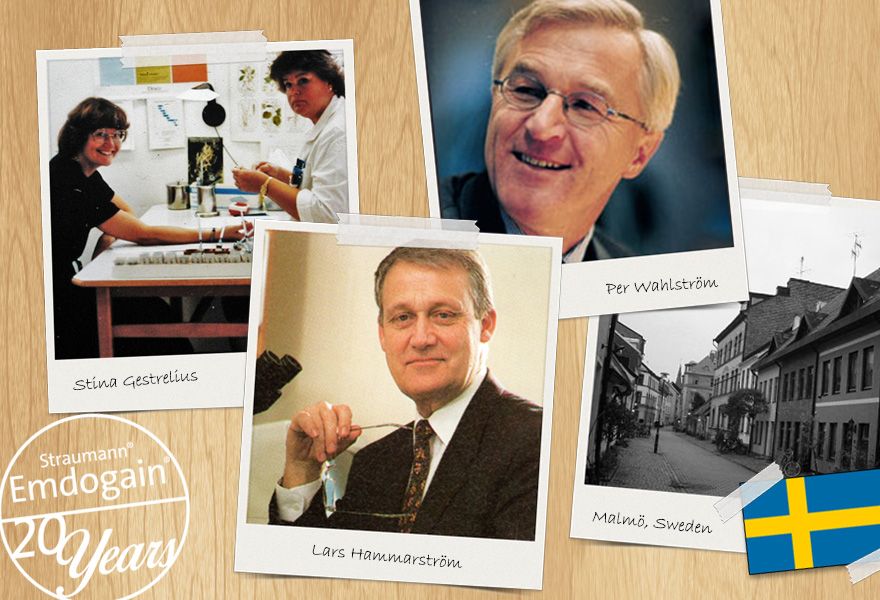
Twenty years have passed since Emdogain®’s market launch by Biora AB, a Swedish start-up company founded by Prof. Lars Hammarström of the Karolinska Institute Dental School in Stockholm, Sweden.
“I have built many theories in my life. I am happy that this one worked!”
Prof. Lars Hammarström
Recently, we had the privilege to interview both Prof. Lars Hammarström as well as Dr. Stina Gestrelius, who was in charge of research and development at Biora AB and therefore played a very important part in making Prof. Hammarström’s idea become a commercial product.
Where did the idea of Emdogain come from?
Prof. Lars Hammarström: As you know, in the 1980s membranes were the only treatment option for periodontal regeneration. Although membranes work, they represent a mechanical approach. I wanted to bring an alternative, biological approach to the dental treatment. While doing research at the Karolinska Institute, I had observed that in some animals, there is a thin layer of enamel which extends between the dentin and cementum. This lead me to the hypothesis that enamel related proteins induce cementum formation.
How did you test your idea?
Prof. Lars Hammarström: My team and I went to the slaughterhouse in Stockholm and got some lower jaws from pigs that were being processed for the meat industry. We scraped off the enamel in the early stages of development, when the mineral content is low and the consistency is like Philadelphia cream cheese, making it very easy to remove. We dispersed it in physiological saline solution. We then made a groove in the surface of the root of an animal model, put a little bit of the enamel protein solution in the groove and repositioned the soft tissue. After two months the hole was filled with nicely attached cementum and also periodontal ligament!
How did your idea become a product?
Prof. Lars Hammarström: After this initial breakthrough, I wanted to get a patent on my discovery and hopefully launch a regenerative dental product based on it. I was fortunate enough to meet Per Wahlström, who was just starting Euroventures Nordica, a venture capital company. When I explained my concept, he was keen to collaborate with me and that is how I got some starting capital. We then established Biora AB in 1987 and started a collaboration with Ferring, a big pharmaceutical company in Malmö, Sweden, with a very good reputation for protein chemistry. We gave the enamel matrix to a research group there, of which Dr. Stina Gestrelius was in charge. The aim of the collaboration was for us to get more information for our patent, while Ferring was interested in making a marketable active synthetic peptide out of the enamel matrix. After 9 months of research, Dr. Gestrelius’ results showed that, while the matrix as a whole or the full mix of proteins extracted from the matrix had some activity, all subsets of peptides tested showed none – so Ferring lost interest in our collaboration. Fortunately, Dr. Gestrelius agreed to come work for us at Biora AB in 1988.

Dr. Gestrelius, was this a big leap of faith to leave your job at Ferring to work at Biora?
Dr. Stina Getrelius: No, because throughout the 9 months that I worked on EMD, I had seen it work. I also knew the people behind this project and trusted that we could make a product out of it.
How was your collaboration?
Prof. Lars Hammarström: Dr. Gestrelius brought her experience of good laboratory practice and registration. She was very important for the development of the product and when we had collected enough material to apply to the registration authorities in Europe and also in the United States, she was very instrumental. We were able to register the product both in Europe and the USA, even though it was unusual for an animal protein to be used in humans.
“Emdogain is based on biomimicry – a very academically smart principle.”
Prof. Dr. Nicholas Lang
What evidence did you need to collect?
Dr. Stina Gestrelius: Immunological studies were crucial to demonstrate that there was no risk of allergic or immunological reactions. Actually, before formally starting any studies, many of us at Biora performed skin-prick tests on ourselves with EMD to see if this would generate any reactions. Because there were none, we started a range of clinical immunological studies. Of course, a wide array of in vitro studies, kinetic and physicochemical studies, in vivo pre-clinical studies, non-clinical safety studies and clinical studies (in collaboration with clinicians such as Dr. Gunnar Heden, Dr. Leif Blomlöf and Dr. Lars Heijl) also had to be performed.
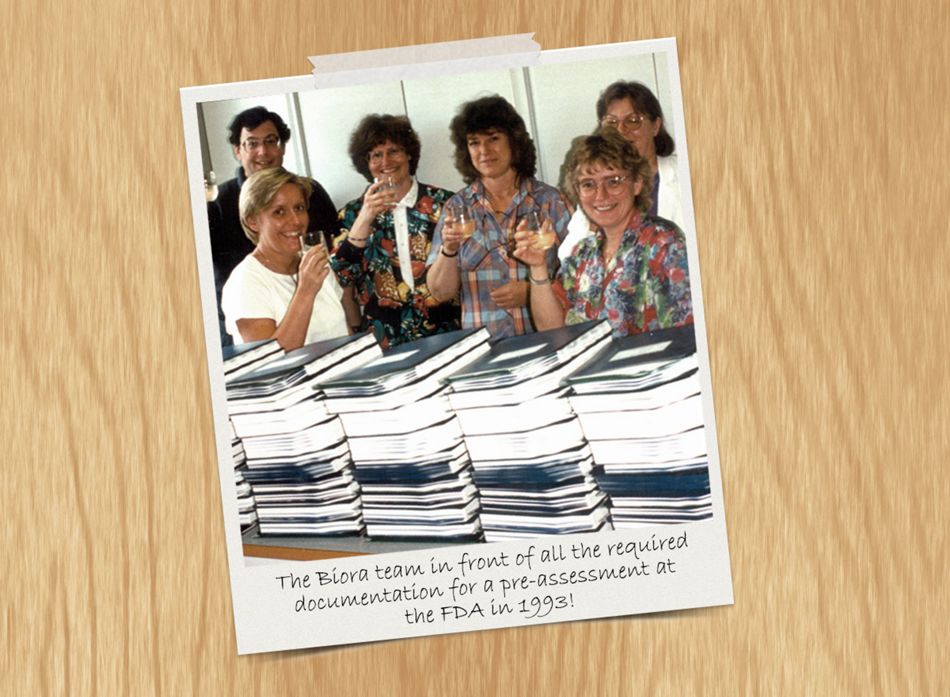
What was the best moment?
Dr. Stina Gestrelius: The entire experience was very interesting. But probably the highlights were when we received the European registration (CE mark) in 1995 and the FDA approval in 1996. Both of these events made national news in important newspapers in Sweden. That was very exciting.
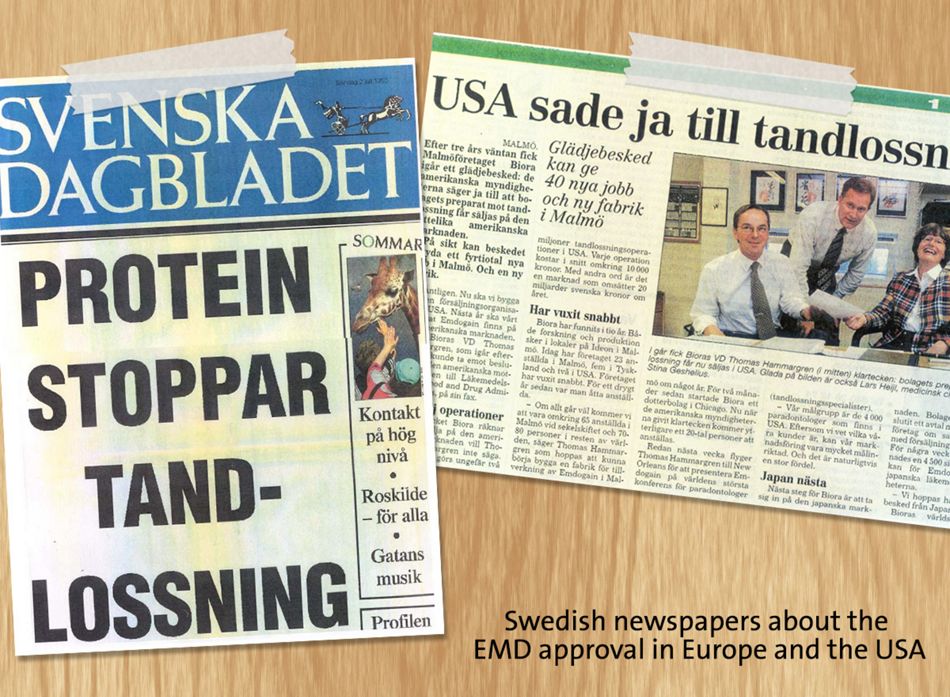
What was your main hurdle along the way?
Dr. Stina Gestrelius: Financially, it was not always easy. To collect all the required evidence, we needed altogether 7 years and during this time, we needed financial support. We had to be creative to find ways to generate revenues somehow. I feel like we did almost everything possible besides robbing a bank! For instance, we became a service provider of aseptic freeze drying for pharmaceutical companies from 1992 until 1995.
“I am truly amazed that twenty years later, Emdogain® is still considered an innovative product and is so well looked upon by dentists all over the world. I am very proud of Lars!”
Dr. Christina Hammarström, Prof. Lars Hammarström’s wife and pediatric dentist
What were the next steps?
Dr. Stina Gestrelius: As soon as we had the approval, we needed more money to start subsidiaries and marketing activities to promote Emdogain in various markets. We obtained this money through two public offerings – one in Sweden and one in New York City. At its peak, Biora had 6 subsidiaries (in the USA, Germany, Italy, the UK, Switzerland, and the Netherlands) and was also available through distributors in many countries such as in Japan. We also published our main collective research findings in an issue of the Journal of Clinical Periodontology (Volume 24, Number 9) in September of 1997. We continued to develop the product and extend the indications in different markets to get the range we have today: intrabony defects, furcation defects and recession defects.
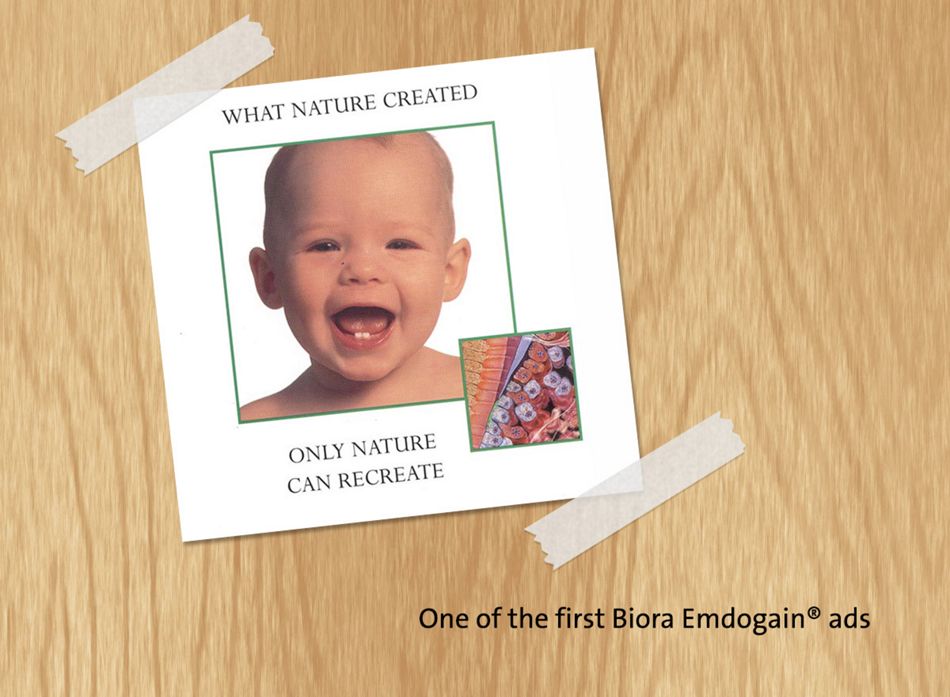
How did the market react during the launch?
Dr. Stina Gestrelius: Because Emdogain® was the first biological product used in dentistry, it was not easy to explain the concept to dentists and this took some time. Nevertheless, year after year, our sales kept growing. I was initially afraid – despite all the tests and studies – that there would be some negative side effects. But there were none. Instead, we started to receive phone calls from clinicians, asking us if we had noticed the good wound healing, which occurs when Emdogain® is used. We had not. We did more research on this topic and applied for a patent which was later licenced to Mölnlycke for use in extra-oral wounds.
Today, Emdogain is 20 years old, still the gold standard in periodontology and helped to save the teeth of over 2 million patients. How do you feel about this?
Dr. Stina Gestrelius: I am very happy, of course.
Prof. Lars Hammarström: I am very happy as well. I have built many theories in my life. I am happy that this one worked!
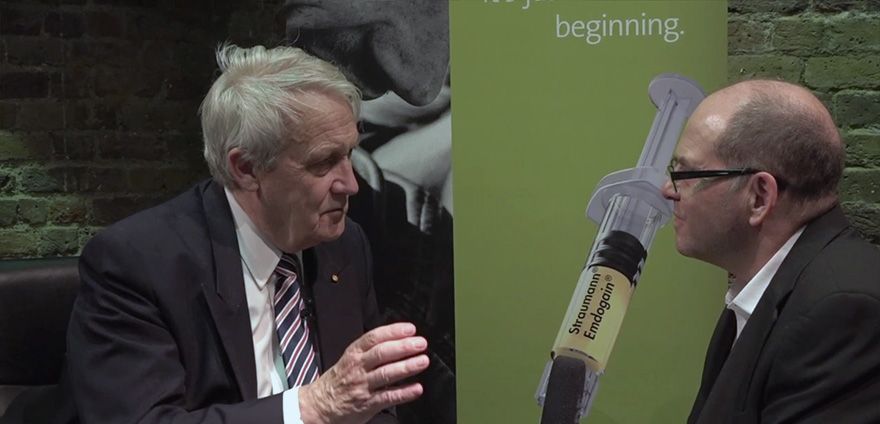
Prof. Lars Hammarström and Mark Hill (Corporate Communications Straumann) at the EAO 2015 in Stockholm, Sweden.